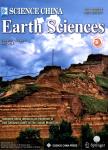Anisotropic dispersion mechanism of inter-salt shale oil reservoir in terrestrial saline lake sediments using cross-band experiments
作者机构:State Key Laboratory of Petroleum Resource and ProspectingChina University of Petroleum(Beijing)Beijing 102249China Exploration and Production Research Institute of Jianghan Oilfield Branch of SinopecWuhan 434124China Institute of Earthquake ForecastingCEABeijing 100036China Yumen Oil Field Branch of CNPC Exploration and Development Research InstituteJiuquan 735000China
出 版 物:《Science China Earth Sciences》 (中国科学(地球科学英文版))
年 卷 期:2023年第66卷第7期
页 面:1603-1621页
核心收录:
学科分类:081803[工学-地质工程] 08[工学] 0818[工学-地质资源与地质工程]
基 金:supported by the National Natural Science Foundation of China (Grant Nos.U20B2015 41574103 41974120 41804104 and U19B600304)
主 题:Terrestrial shale oil reservoir Rock physics Cross-band experiment Anisotropic dispersion Pressure sensitivity
摘 要:The rock mechanical properties and elastic anisotropy of terrestrial shale oil reservoirs are affected by various factors,such as lithology,structure,pores,fractures,and *** experimental study of dynamic and static elastic properties can provide important mechanism analysis for the prediction of geological and engineering “sweet spots in shale *** are a large number of studies on the measurement of static mechanical properties of shale,but the experiments on dynamic crossband elastic anisotropy of terrestrial shale have not yet been conducted ***,we report the anisotropic dispersion mechanism of favorable lithofacies(lamellar dolomitic shale,with vertical and horizontal bedding) in the inter-salt shale oil reservoir of the Qianjiang Formation for different confining pressures and fluid saturation *** experiments were conducted by the cross-band rock physics measurement technology that comprised low-frequency stress-strain measurements and a high-frequency ultrasonic *** experimental results indicated that:(1) The elastic property dispersion of the terrestrial shale was stronger than that of marine shale due to the high viscosity of the medium oil in the terrestrial *** lamellar structures and interbedded fractures were the main factors that determined the strong anisotropy of the terrestrial shale.(2) The dispersion of elastic properties from low to high frequencies in a partial oil saturation state ranged from strong to weak;the wave-induced fluid flow or intrinsic dissipation of viscoelastic inclusions may be the dominant mechanisms that caused the seismic dispersion.(3) The elastic parameters measured in the direction vertical to the bedding plane had stronger dispersion and pressure sensitivity than those measured in the direction parallel to the bedding plane,and the anisotropy and pressure sensitivity at seismic frequencies were higher than those at the ultrasonic frequencies.(4) Fluid filling reduced



